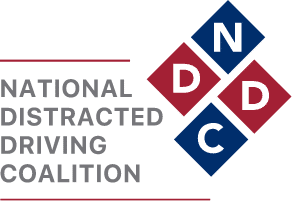Data
Data is a cornerstone to problem identification. In order to mobilize research and action, it is essential to demonstrate the problem is worthy of attention and warrants resources to address it. This is a key focus area for the NDDC. The objectives of these action items are to compile relevant data to begin to illustrate the magnitude and characteristics of distracted driving as well as identify opportunities to strengthen data strategies.
1
2021 priority
Summarize available data sources to describe how these data are collected and used, as well as the strengths and limitations.
This resource would be valuable to allow organizations to spend less time seeking data and more time affecting change. This resource would also be useful to inform policymakers, legislators and potential funders and guide data-driven decisions. The Coalition will summarize available sources and previous reviews and identify states tracking distraction as a contributing factor in crashes.
This new report, Distracted Driving Prevalence Data: Sources, Challenges & Technological Solutions, identifies crucial gaps in distracted driving data measuring the prevalence of the problem in North America and suggests the magnitude of the distracted driving problem continues to be underestimated. This gap is concerning because it can delay the development and implementation of legislation and other policies to address it, even as the surge in risky driving brought on by the pandemic continues. The report also highlights potential opportunities for emerging technological solutions to collect more robust and complete data.
2
2021 priority
Communicate the importance of collecting prevalence data to measure and track distracted driving.
Demonstrate data gaps and the impact of under-reporting of distracted driving incidents to emphasize the importance of good data to guide legislation, programs and policies. The Coalition will track improvements to Fatality Analysis Reporting System data quality lead by the National Highway Traffic Safety Administration.
The report includes a high-level overview of available data sources and their strengths and limitations. These include sources such as collision data, conviction data, naturalistic driving studies, observational studies, telephone and online surveys, in-person surveys, and cellphone user data, all of which have gaps.
Twitter: https://twitter.com/NTSB/status/1633593304741818370
YouTube: https://www.youtube.com/watch?v=_g1rxG7hbtQ
LinkedIn: via StopDistractions.org
3
Identify what measures are available with respect to the effectiveness of distracted driving laws, and what information is or should be collected by jurisdictions to guide evaluations.
Underscore the importance of evaluating the effectiveness of distracted driving laws and practices in order to increase efficiency and accelerate change to reduce distracted driving.
4
Recommend that NHTSA continue to share guidance regarding challenges and best practices in identifying and documenting distracted driving crashes.
